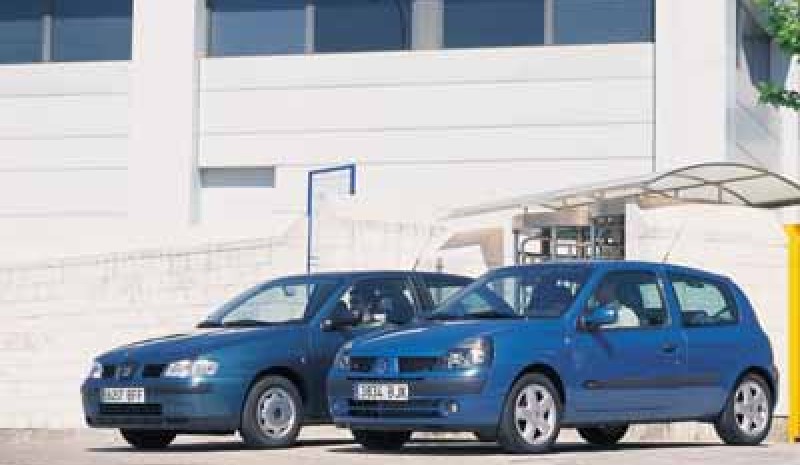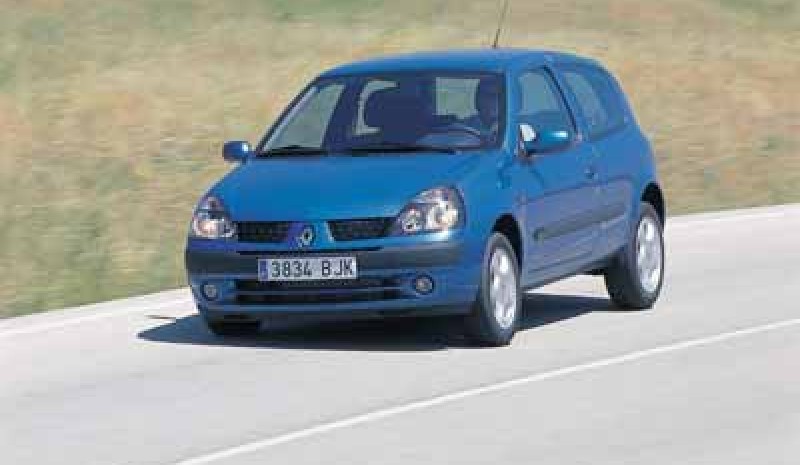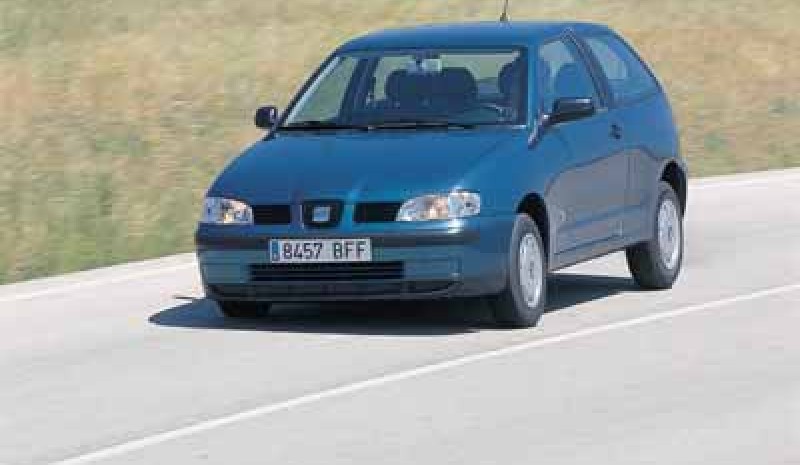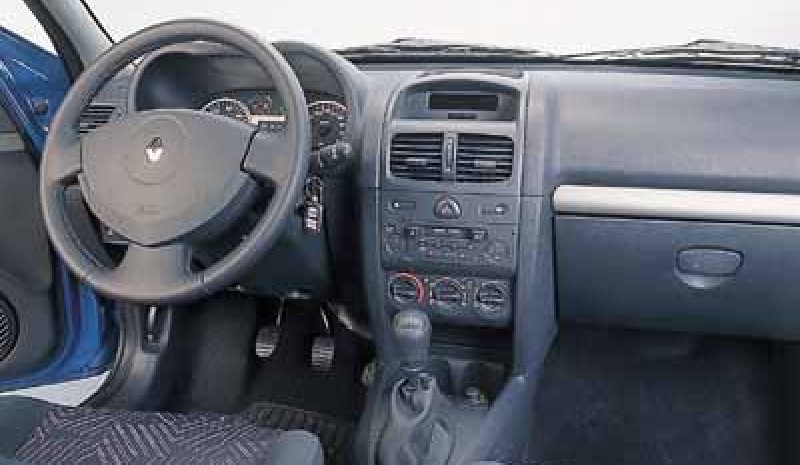Comparison: Renault Clio 1.5 dCi / Seat Ibiza 1.9 SDi
While in the high ranges competition has entered a race for the most powerful and fastest diesel in the lower echelons war is quite different. The basic objective is to obtain the figures of smaller consumption.




Renault has matched the appearance of its new engine direct injection and common-rail with the presentation of the new body, which represents a certain commercial advantage by offering two new features at once. The new mechanics, despite having supercharging’s main purpose is to offer a decent road performance conjugate with figures of extremely low consumption. To this Renault adds a complete series endowment for its price, which gives you a pretty competitive business situation. Ibiza, meanwhile, more established in the market and his last farthest renewal, is somewhat more expensive and with a somewhat lower standard equipment. The first installment 1.5-liter engine more modest and remarkable for its low power consumption. Electronic management is responsible for obtaining fairly uniform, which makes us forget that it is a supercharged engine a touch. The modest engine makes, unlike engines near 2 liters direct injection, its range of use is somewhat shorter. If those are available torque values even below 2,000 rpm, the new Clio needle must be placed almost 2,500 rpm if we have the strength necessary to meet overtaking. And not by a turbo unwanted effect, but because such a tight cylinder, is paid. In Ibiza the margin is somewhat wider, but is also less firm response to any regime. Here there is no turbo and although the larger capacity engine to turn laps highest compensates a bit this effect, never does the extent necessary to overtake his rival.
In practice, both offer very similar dynamic qualities and using change frequently can be obtained surprising results in both cases, without forgetting that we are facing engines less than 70 nominal CV, although both have surpassed that figure in our dyno. Based on these assumptions, both find their natural home working on urban routes, but its operation is more remarkable in highway and motorway where the ease overtaking allows us to maintain above 140 km / h cruise with relative ease, although it is it true that you have to put the “brick” on the right pedal and never remove it. Fortunately, and here comes the justification of the owner of our test is that even with the throttle for long periods of time, consumption remain within incredible margins and rarely seven liters exceed one hundred kilometers. The Ibiza spends more than the Clio, but the difference is negligible because it does not reach half a liter. Then, on more difficult terrain, they will reveal more of their limitations. Loaded with slides and parts of car, overtaking a truck it requires a degree of concentration that is becoming less common and should not be too optimistic distances if we want to take a shock.
The new Clio has changed quite aesthetic, both outside, and inside, but what has not changed is its traditional position at the wheel, rather conditioned by a steep steering wheel and a fairly high stool, even in its lower regulation . This forces us to position ourselves too close to the steering wheel to reach with ease to the top of the hoop and it took quite in finding a regulation that allows us to be comfortable. Moreover, the changes are quite positive. The interior is attractive and extraordinary termination for a model in its class. Highlights in this respect the new position of the command to abate, now located at the top front seatbacks, which improves handling uncomfortable before. In Ibiza, despite the lack of height adjustment of the bench, posture is more rational and allows comfortably placed to a wider range of sizes. Moreover, the broader the cabin allows for greater slack in the Seat when traveling with the five seats occupied.
Section behavior in the two go more than enough to frame relative to the power of their engines. Well cushioned, something better Renault, enjoy a good capacity to absorb irregularities and excellent body control. Understeer is moderate and the rear responds well to changes in support. In this sense the Renault is more agile than the Ibiza and maintains a very progressive reactions, which give the same confidence to the driver in the Seat. The latter is more sensitive to temperature in the chapter on brakes, but never anything disturbing. In the overall the bravest Renault leaves the Seat. Anda something more, spend a little less, it is cheaper and have better equipment. The Ibiza is defended with a wider and greater luggage capacity body, ends that for some can be decisive, but in most cases will not come to make up the rest.
Renault has matched the appearance of its new engine direct injection and common-rail with the presentation of the new body, which represents a certain commercial advantage by offering two new features at once. The new mechanics, despite having supercharging’s main purpose is to offer a decent road performance conjugate with figures of extremely low consumption. To this Renault adds a complete series endowment for its price, which gives you a pretty competitive business situation. Ibiza, meanwhile, more established in the market and his last farthest renewal, is somewhat more expensive and with a somewhat lower standard equipment. The first installment 1.5-liter engine more modest and remarkable for its low power consumption. Electronic management is responsible for obtaining fairly uniform, which makes us forget that it is a supercharged engine a touch. The modest engine makes, unlike engines near 2 liters direct injection, its range of use is somewhat shorter. If those are available torque values even below 2,000 rpm, the new Clio needle must be placed almost 2,500 rpm if we have the strength necessary to meet overtaking. And not by a turbo unwanted effect, but because such a tight cylinder, is paid. In Ibiza the margin is somewhat wider, but is also less firm response to any regime. Here there is no turbo and although the larger capacity engine to turn laps highest compensates a bit this effect, never does the extent necessary to overtake his rival.
In practice, both offer very similar dynamic qualities and using change frequently can be obtained surprising results in both cases, without forgetting that we are facing engines less than 70 nominal CV, although both have surpassed that figure in our dyno. Based on these assumptions, both find their natural home working on urban routes, but its operation is more remarkable in highway and motorway where the ease overtaking allows us to maintain above 140 km / h cruise with relative ease, although it is it true that you have to put the “brick” on the right pedal and never remove it. Fortunately, and here comes the justification of the owner of our test is that even with the throttle for long periods of time, consumption remain within incredible margins and rarely seven liters exceed one hundred kilometers. The Ibiza spends more than the Clio, but the difference is negligible because it does not reach half a liter. Then, on more difficult terrain, they will reveal more of their limitations. Loaded with slides and parts of car, overtaking a truck it requires a degree of concentration that is becoming less common and should not be too optimistic distances if we want to take a shock.
The new Clio has changed quite aesthetic, both outside, and inside, but what has not changed is its traditional position at the wheel, rather conditioned by a steep steering wheel and a fairly high stool, even in its lower regulation . This forces us to position ourselves too close to the steering wheel to reach with ease to the top of the hoop and it took quite in finding a regulation that allows us to be comfortable. Moreover, the changes are quite positive. The interior is attractive and extraordinary termination for a model in its class. Highlights in this respect the new position of the command to abate, now located at the top front seatbacks, which improves handling uncomfortable before. In Ibiza, despite the lack of height adjustment of the bench, posture is more rational and allows comfortably placed to a wider range of sizes. Moreover, the broader the cabin allows for greater slack in the Seat when traveling with the five seats occupied.
Section behavior in the two go more than enough to frame relative to the power of their engines. Well cushioned, something better Renault, enjoy a good capacity to absorb irregularities and excellent body control. Understeer is moderate and the rear responds well to changes in support. In this sense the Renault is more agile than the Ibiza and maintains a very progressive reactions, which give the same confidence to the driver in the Seat. The latter is more sensitive to temperature in the chapter on brakes, but never anything disturbing. In the overall the bravest Renault leaves the Seat. Anda something more, spend a little less, it is cheaper and have better equipment. The Ibiza is defended with a wider and greater luggage capacity body, ends that for some can be decisive, but in most cases will not come to make up the rest.
